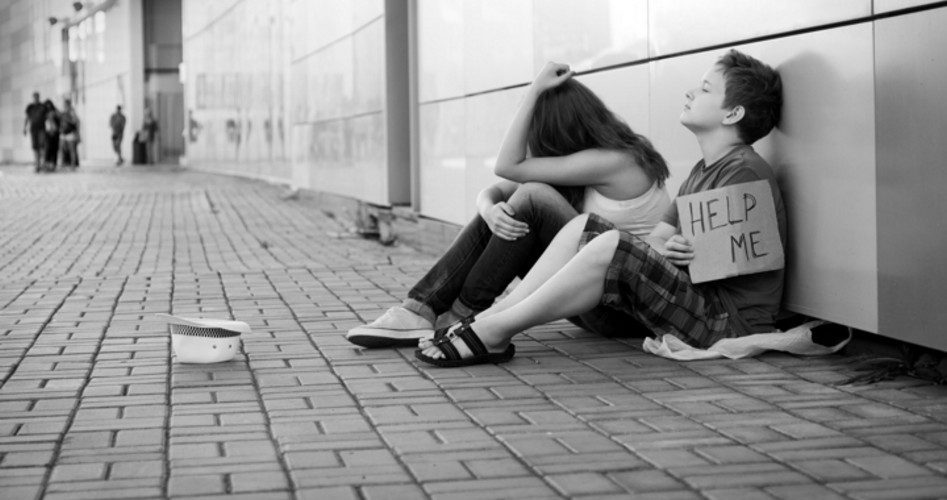
If further proof is needed that the so-called War on Poverty continues to fail, the latest report from the Census Bureau has just provided it: 21.3 percent of children under the age of 18 — more than one in five — are living in poverty. In 1964, the year that then-President Lyndon Johnson declared the federal government’s war on poverty, that percentage was 22.7 percent.
The news from the Census Bureau provides additional evidence of the war’s failure: “The lowest recorded rate of child poverty was in 1969, when 13.8 percent of children were counted as poor.” In simple terms, as the cost of the War on Poverty has escalated from $178 billion a year (in present dollar terms) to nearly a trillion dollars a year, the poverty level among children has risen by more than 50 percent.
But among single female-headed families the numbers are vastly worse, said the bureau:
In 2012, a child living in a single female-headed family was well over four times more likely to be poor than a child living in a married-couple family.
In 2012, among all children living in single female-headed families, 47.2 percent were poor.
Back in 2010 the Associated Press noted that most of those single female-headed families are black. Wrote the AP:
Children of unmarried mothers of any race are more likely to perform poorly in school, go to prison, use drugs, be poor as adults, and have their own children out of wedlock.
The black community’s 72 percent [illegitimacy] rate eclipses that of most other groups: 17 percent of Asians, 29 percent of whites, 53 percent of Hispanics, and 66 percent of Native Americans were born to unwed mothers in 2008.
In its attempt to explain the wide discrepancy, the AP named the usual arguments: a “legacy” of segregation, the drug epidemic sending disproportionate numbers of black men to prison and so forth. But the AP also revealed one single primary reason: “Welfare [state] laws created a financial incentive for poor mothers to stay single.”
This was predicted by author and sociologist Daniel Patrick Moynihan — later the Democratic senator from New York for four terms — in his 1965 book The Negro Family: The Case for National Action, in which he concluded that the absence of a father in the home would greatly hinder progress toward economic and political equality. This flew in the face of the popular notion that economic conditions were primarily responsible for social success. As Moynihan later noted: “It turned out that what everyone knew was evidently not so.” He added:
The steady expansion of welfare programs [today there are 126 of them!] can be taken as a measure of the steady disintegration of the Negro family structure over the past generation in the United States….
At the heart of the deterioration of the fabric of the Negro society is the deterioration of the Negro family.
As The New American reported last year in its in-depth article “Do Progressive Policies Hurt Black Americans?” a wide gamut of liberal legislation has had negative effects on black families, including measures in schools, minimum wage and prevailing wage laws, affirmative action programs, welfare, pro-union legislation, etc. But these revelations, which were apparent as far back as 1965, appear to have had no impact whatsoever in Washington as welfare programs continue to expand.
As Cato noted in 2012, “Since President Obama took office, federal welfare spending has increased by 41 percent [or] more than $193 billion per year.” And when state welfare programs are taken into account, governments spend nearly a trillion dollars every year in the war on poverty. Since 1965, the total spent in that “war” exceeds $17 trillion, the equivalent of the gross economic output of the United States in one year. It’s also equivalent to the national debt of $17 trillion. Added Cato:
Despite spending nearly $15 trillion [as of early 2012] in total welfare spending since Lyndon Johnson declared war on poverty in 1964, the poverty rate is perilously close to where we began more than 40 years ago.
Put another way, the spending on the war on poverty exceeds $61,000 a year for a family of three. But the poverty level for a family of three is just $18,530, which means that, according to Cato, “We should have theoretically wiped out poverty in America many times over.”
One of the problems is that the war isn’t intended to help the poor lift themselves out of poverty at all but to make them comfortable in it, according to Cato:
The vast majority of current programs are focused on making poverty more comfortable — giving poor people more food, better shelter, health care, and so forth — rather than giving people the tools that will help them escape poverty.
As the endless war on poverty continues, its effects are increasingly being felt among poor white Americans as well, with much greater potential consequences, considering the vast number of whites. Charles Murray’s latest book Coming Apart: The State of White America, published in January 2013, provides evidence that, thanks to that war, poor white America is now also falling into illegitimacy, crime, and poverty. The welfare state removes incentives that provide the glue to keep traditional families together but instead rewards anti-family behavior.
Statistically, poor white America is where poor black America was in the 1960s, and the trend by every metric is increasing. The only victors in the war on poverty are those running the programs. The losers are those who were initially intended to be helped. The destruction of black families is nearly complete. The other races aren’t far behind, as the war on poverty continues.
A graduate of Cornell University and a former investment advisor, Bob is a regular contributor to The New American magazine and blogs frequently at www.LightFromTheRight.com, primarily on economics and politics. He can be reached at [email protected].



